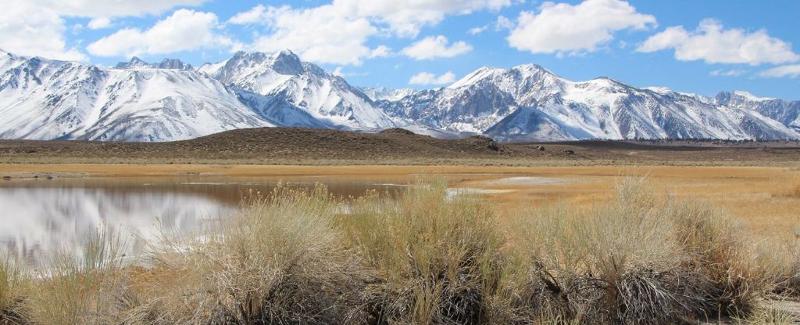Unveiling the Restless Long Valley Volcano: A Deep Dive into California's Geological Marvel
Join us on a captivating journey as we explore the enigmatic Long Valley volcano in eastern California. Delve into the recent study by researchers at the California Institute of Technology (CIT) that sheds light on the volcano's restlessness and the intriguing cooling process that fuels seismic activity. Get ready to uncover the hidden secrets of this geological marvel.
Unveiling the Long Valley Caldera
Explore the mysterious Long Valley Caldera and its significance in understanding the restless Long Valley volcano.
The Long Valley Caldera, a depression atop the buried Long Valley volcano, has been the epicenter of seismic activity in eastern California. This subheading delves into the geological marvel of the caldera and its crucial role in unraveling the volcano's behavior.
By studying the caldera, researchers have gained valuable insights into the volcano's past eruptions and the current state of its magma chamber. Discover the fascinating details of this unique geological feature and its significance in understanding the restless nature of the Long Valley volcano.
Unraveling the Cooling Process
Learn about the intriguing cooling process of the Long Valley volcano and its impact on seismic activity.
The Long Valley volcano is not heating up; instead, it is cooling down. This subheading uncovers the research findings that shed light on the cooling process and its connection to seismic activity.
As the deeper magma chamber of the volcano cools off, gases and liquids rise to the surface, causing earthquakes and small eruptions. Explore the fascinating mechanisms behind this cooling process and its implications for the volcano's behavior.
Unprecedented Insights from Distributed Acoustic Sensing
Discover how researchers used distributed acoustic sensing to gain unprecedented insights into the Long Valley volcano.
Researchers at the California Institute of Technology (CIT) utilized a cutting-edge technique called distributed acoustic sensing to study the Long Valley volcano. This subheading delves into the details of this innovative approach and its remarkable findings.
By using a 100-kilometer stretch of fiber optic cable equipped with distributed acoustic sensing technology, the researchers created a high-resolution map of the caldera and the volcano beneath. Explore the breakthroughs and insights gained from this groundbreaking research method.
The Separation of Magma Chamber and Hydrothermal System
Understand the distinct separation between the magma chamber and hydrothermal system of the Long Valley volcano.
The Long Valley volcano exhibits a clear separation between its large magma chamber and the shallow hydrothermal system. This subheading explores the significance of this separation and its role in the volcano's behavior.
As the magma chamber cools off, gasses and liquids bubble up towards the surface through the hydrothermal system, leading to seismic activity. Dive into the details of this intriguing relationship and its impact on the volcano's restless nature.
Conclusion
In conclusion, the Long Valley volcano in eastern California continues to intrigue researchers with its restless nature. Through the study conducted by the California Institute of Technology (CIT), we have gained valuable insights into the cooling process of the volcano and its connection to seismic activity. The distinct separation between the magma chamber and hydrothermal system further adds to the complexity of this geological marvel. By unraveling these mysteries, scientists are better equipped to understand and monitor the behavior of the Long Valley volcano.
FQA
What is the Long Valley Caldera?
The Long Valley Caldera is a depression atop the buried Long Valley volcano in eastern California. It has been the epicenter of seismic activity and plays a crucial role in understanding the volcano's behavior.
How does the cooling process affect the Long Valley volcano?
As the deeper magma chamber of the Long Valley volcano cools off, gases and liquids rise to the surface, causing earthquakes and small eruptions. This cooling process is a key factor in the volcano's restless nature.
What is distributed acoustic sensing?
Distributed acoustic sensing is an innovative technique that utilizes a network of fiber optic cables to create a high-resolution map of seismic activity. Researchers used this method to gain unprecedented insights into the Long Valley volcano.
What is the significance of the separation between the magma chamber and hydrothermal system?
The separation between the magma chamber and hydrothermal system of the Long Valley volcano plays a crucial role in its behavior. As the magma chamber cools off, gasses and liquids bubble up through the hydrothermal system, leading to seismic activity.

